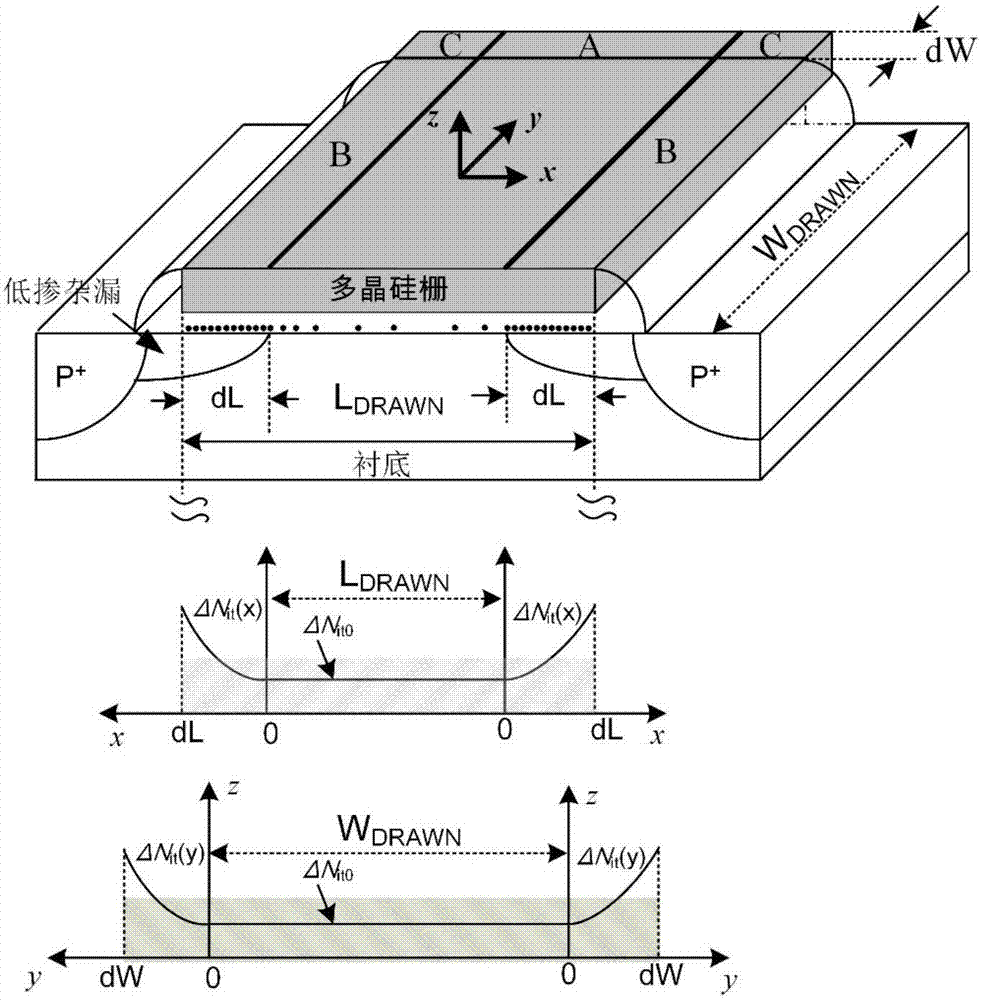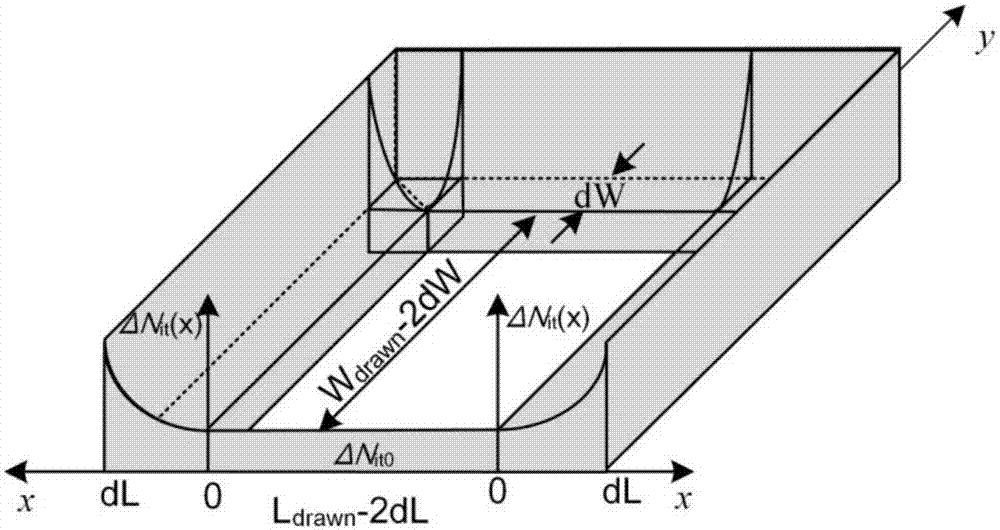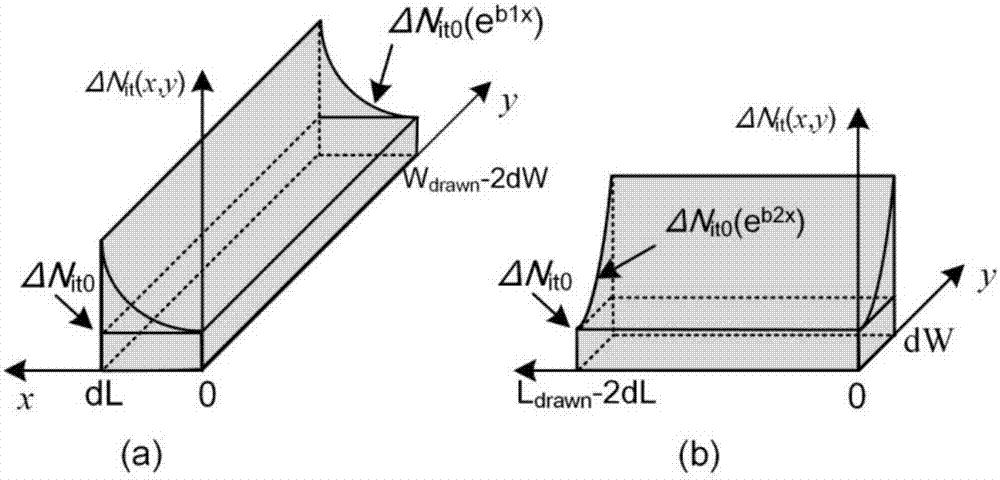NBTI degradation model obtaining method based on nonuniform distribution interface traps
A technology of non-uniform distribution and interface traps, which is applied in the fields of instrumentation, calculation, electrical and digital data processing, etc., can solve the problems of accurate calculation of the distribution of interface traps in the channel edge region, and achieves wide applicability, few fitting parameters, and reliable devices. Sexually accurate effects
- Summary
- Abstract
- Description
- Claims
- Application Information
AI Technical Summary
Problems solved by technology
Method used
Image
Examples
Embodiment Construction
[0042] The present invention will be further described in detail in conjunction with the following specific embodiments and accompanying drawings. The process, conditions, experimental methods, etc. for implementing the present invention, except for the content specifically mentioned below, are common knowledge and common knowledge in this field, and the present invention has no special limitation content.
[0043] The NBTI degradation model provided by the present invention is based on the non-uniform distribution of interface traps, taking into account the influence of device geometry channel length and width, and accurately calculates the distribution frame and total density of interface traps. The modeling process of the present invention includes the following steps:
[0044] Step 1: Divide the interface trap ΔN in different regions of the MOS device IT distributed
[0045] according to figure 1 The schematic diagram of the distribution division of ΔNit is shown, and t...
PUM
 Login to View More
Login to View More Abstract
Description
Claims
Application Information
 Login to View More
Login to View More - R&D Engineer
- R&D Manager
- IP Professional
- Industry Leading Data Capabilities
- Powerful AI technology
- Patent DNA Extraction
Browse by: Latest US Patents, China's latest patents, Technical Efficacy Thesaurus, Application Domain, Technology Topic, Popular Technical Reports.
© 2024 PatSnap. All rights reserved.Legal|Privacy policy|Modern Slavery Act Transparency Statement|Sitemap|About US| Contact US: help@patsnap.com










